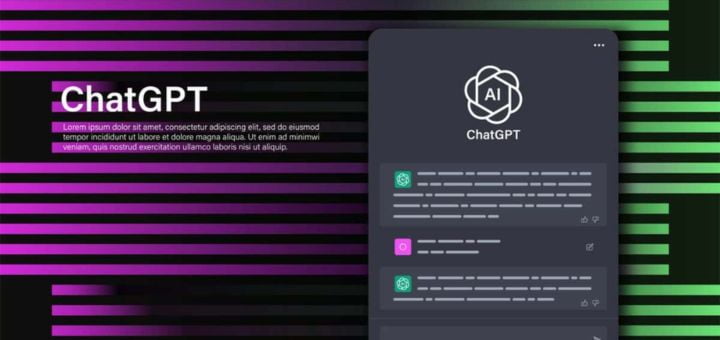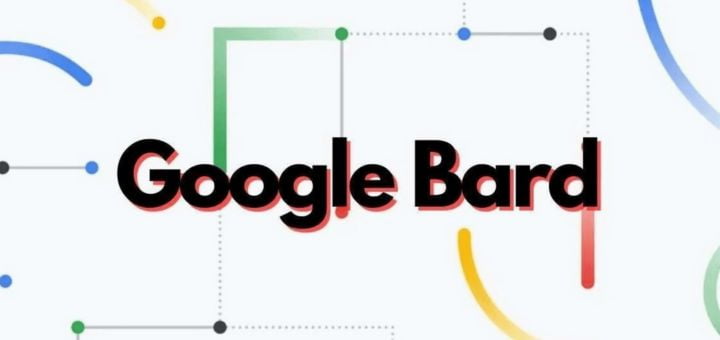Introduction:
In this modern day, which is characterised by rapid change on a global scale, even the art of telling stories has been altered as a result of the arrival of technology. This is because of the rise of digital storytelling. Human storytellers, who are also known as bards, have historically been viewed as being at the centre of narratives and as a crucial part of them. This view continues to hold true today. As was illustrated by ChatGPT, artificial intelligence is currently undergoing a revolution that will profoundly alter the way that tales are delivered in the modern world. This change will take place in the next few years. Join us as we investigate the remarkable collision of imagination, feeling, and technology that takes place in the domains of ChatGPT versus Bard, and come along for the journey as we do so!
ChatGPT vs Google Bard are both large language models (LLMs) that are capable of generating text, translating languages, writing different kinds of creative content, and answering your questions in an informative way. However, there are some key differences between the two models.
ChatGPT is trained on a massive dataset of text and code, while Bard is trained on a dataset that includes scientific papers, math expressions, and source code. This means that Bard is better at understanding and responding to complex questions, while ChatGPT is better at generating creative text formats.
Bard also has access to the internet in real time, which means that it can always update its knowledge with the latest information. ChatGPT, on the other hand, is limited to the information that was included in its training dataset.
In terms of speed, ChatGPT is faster than Bard. However, Bard is still under development, and its speed is expected to improve over time.
Overall, both ChatGPT and Bard are powerful LLMs that can be used for a variety of tasks. The best model for you will depend on your specific needs.
Differences between ChatGPT and Bard
| Feature | ChatGPT | Bard |
|---|---|---|
| Training data | Text and code | Text, code, scientific papers, math expressions |
| Access to internet | No | Yes |
| Speed | Faster | Slower |
| Best for | Generating creative text formats, answering simple questions | Understanding and responding to complex questions, research |
Advantages of ChatGPT (AI Language Model)
Scalability: ChatGPT can handle a large volume of inquiries simultaneously, making it suitable for applications with high traffic.
Consistency: It provides consistent responses and doesn’t get tired or make mistakes due to fatigue, ensuring reliability in customer interactions.
24/7 Availability: ChatGPT can operate around the clock, providing customer support or engaging users at any time.
Language Support: ChatGPT can understand and respond in multiple languages, expanding its reach to global audiences.
Data-Driven Insights: It can analyze vast amounts of data to provide actionable insights, aiding businesses in decision-making.
Cost-Efficiency: ChatGPT can reduce operational costs by automating tasks that would otherwise require human labor.
Adaptability: It can be fine-tuned for specific tasks or industries, making it versatile for various applications.
Advantages of a Hypothetical "Bard Google" (Assuming It's a Storytelling or Entertainment Platform)
Human Creativity: A “Bard Google” platform could harness the creativity of human storytellers, offering original and emotionally engaging content.
Cultural Depth: It could draw from diverse cultural traditions and historical knowledge, enriching its storytelling with deep cultural context.
Emotional Connection: Human storytellers can establish deep emotional connections with audiences, eliciting genuine emotional responses.
Adaptability: Bards can tailor their storytelling to the specific preferences and moods of their audience, ensuring a personalized experience.
Live Interaction: A “Bard Google” platform might offer live performances, allowing real-time interaction with storytellers for a more immersive experience.
Heritage Preservation: It could contribute to the preservation of cultural heritage and traditional storytelling practices.
Please note that “Bard Google” is not an existing product or service, and the advantages listed above are hypothetical. If “Bard Google” has become a reality or refers to a specific product or service introduced after my last knowledge update in September 2021, I recommend checking official sources or announcements for more information on its advantages and features.
Features ChatGPT vs. Google Bard
Creativity and Originality:
- ChatGPT relies on patterns in the data it was trained on to generate responses, which may sometimes lead to repetitive or unoriginal content.
- Bards, on the other hand, are known for their ability to create entirely original stories, songs, and poems, drawing from their unique experiences, emotions, and cultural influences.
Emotional Depth:
- Bards can infuse their storytelling with deep emotions, allowing them to connect with audiences on a profound level.
- While ChatGPT can mimic emotions to some extent, its responses are based on learned patterns and may not genuinely convey the depth of human emotion.
Contextual Understanding:
- Bards have the ability to adapt their storytelling based on the context and the emotions of their audience, making their narratives more relatable and engaging.
- ChatGPT’s contextual understanding is limited to the text input it receives, and it may not always respond appropriately to the emotional or situational context of a conversation.
Cultural and Historical Significance:
- Bards have played pivotal roles in preserving cultural histories and traditions through their stories and songs.
- ChatGPT does not inherently possess cultural or historical knowledge but relies on data it was trained on, potentially missing the richness of cultural context that human storytellers can provide.
Flexibility of Expression:
- Bards can use a wide range of expressions, tones, and body language to engage their audience during live performances.
- ChatGPT is limited to text-based interactions, which may not capture the full range of expressive elements that human storytelling can encompass.
Evolution and Adaptation:
- Bards and human storytellers have evolved their art forms over centuries, adapting to changing cultural norms and preferences.
- AI models like ChatGPT evolve primarily through updates and improvements in their algorithms and data but lack the cultural evolution that human storytelling traditions have undergone.
Audience Engagement:
- Bards have the ability to interact directly with their audience, gauging reactions and adjusting their storytelling accordingly.
- ChatGPT responds based on input but may not actively engage with the audience in the same way.
What is ChatGPT?
ChatGPT is a language model developed by OpenAI. It is part of the GPT (Generative Pre-trained Transformer) family of models and is designed for natural language understanding and generation, particularly in a conversational context. ChatGPT is capable of engaging in text-based conversations with users and generating human-like responses.
Here are some key features and characteristics of ChatGPT:
Language Understanding: ChatGPT can understand and process natural language input, allowing it to comprehend questions, prompts, and statements in text form.
Conversational Ability: It is designed to have interactive and dynamic conversations with users, making it suitable for chatbots, virtual assistants, customer support applications, and more.
Contextual Responses: ChatGPT generates responses that are contextually relevant to the conversation, taking into account the previous messages in the chat.
Text Generation: It can generate text in a wide range of styles, from formal to informal, and can be fine-tuned for specific use cases.
Multi-Turn Conversations: ChatGPT can handle multi-turn conversations, remembering the context and history of the discussion to provide coherent responses.
General Knowledge: It has knowledge of a wide array of topics up to its knowledge cutoff date (which is typically when the model was last trained or updated). However, it may not have real-time information or knowledge beyond that date.
Applications: ChatGPT can be used in various applications, such as chatbots for customer service, content generation, answering questions, and assisting users with a wide range of tasks that involve natural language.
Customization: Developers and organizations can fine-tune ChatGPT to align it more closely with their specific needs and preferences.
It’s important to note that ChatGPT, like other language models, has limitations. It may sometimes generate incorrect or biased information, and it can be sensitive to the way a question or prompt is framed. OpenAI has made efforts to mitigate these issues through careful training and moderation.
Overall, ChatGPT represents a significant advancement in the field of natural language processing and has found applications in various industries where human-computer interaction through text is crucial.

What is Bard Google?
Google Bard is a large language model, which means that it is trained on a massive dataset of text and code. This dataset includes books, articles, code, and other forms of text. By training on this dataset, Bard learns to understand the structure of language and how to use it to generate text, translate languages, and answer questions.
Bard is conversational, which means that you can ask it questions in a natural way, without having to use keywords. For example, you could ask Bard “What is the capital of France?” or “How do I write a poem?” Bard would be able to understand these questions and provide you with a comprehensive and informative answer.
Bard is also able to generate different creative text formats, such as poems, code, scripts, musical pieces, email, and letters. This means that you can use Bard to create new and original content. For example, you could ask Bard to write a poem about your favorite book or to generate a code for a new app.
Bard is still under development, so it is not always able to provide perfect answers. However, it is constantly learning and improving, and it has the potential to be a powerful tool for communication, creativity, and learning.
Here are some specific examples of what Bard can do:
- Translate languages: Bard can translate text from one language to another. For example, you could ask Bard to translate “Hello, world!” from English to Spanish.
- Write different kinds of creative content: Bard can write poems, code, scripts, musical pieces, email, and letters. For example, you could ask Bard to write a poem about your favorite book or to generate a code for a new app.
- Answer your questions in an informative way: Bard can answer your questions in a comprehensive and informative way, even if they are open ended, challenging, or strange. For example, you could ask Bard “What is the meaning of life?” or “How do I build a time machine?”

Conclusion
In the end, the battle between ChatGPT and Bard is not one of replacement but of coexistence and collaboration. While AI like ChatGPT offers speed, consistency, and innovation, Bards bring the irreplaceable human touch, preserving traditions, emotions, and cultural histories. As technology and storytelling evolve together, we are privileged to witness a narrative renaissance where the old and new unite, enriching our lives in ways we could never have imagined.
At Webtoils Development LLP, we understand the importance of storytelling in today’s digital landscape. Our services, including Digital Marketing, Web Development, and UI/UX Design, can help you harness the power of technology to tell your brand’s story effectively. Get in touch with us to embark on your storytelling journey in the digital age.


